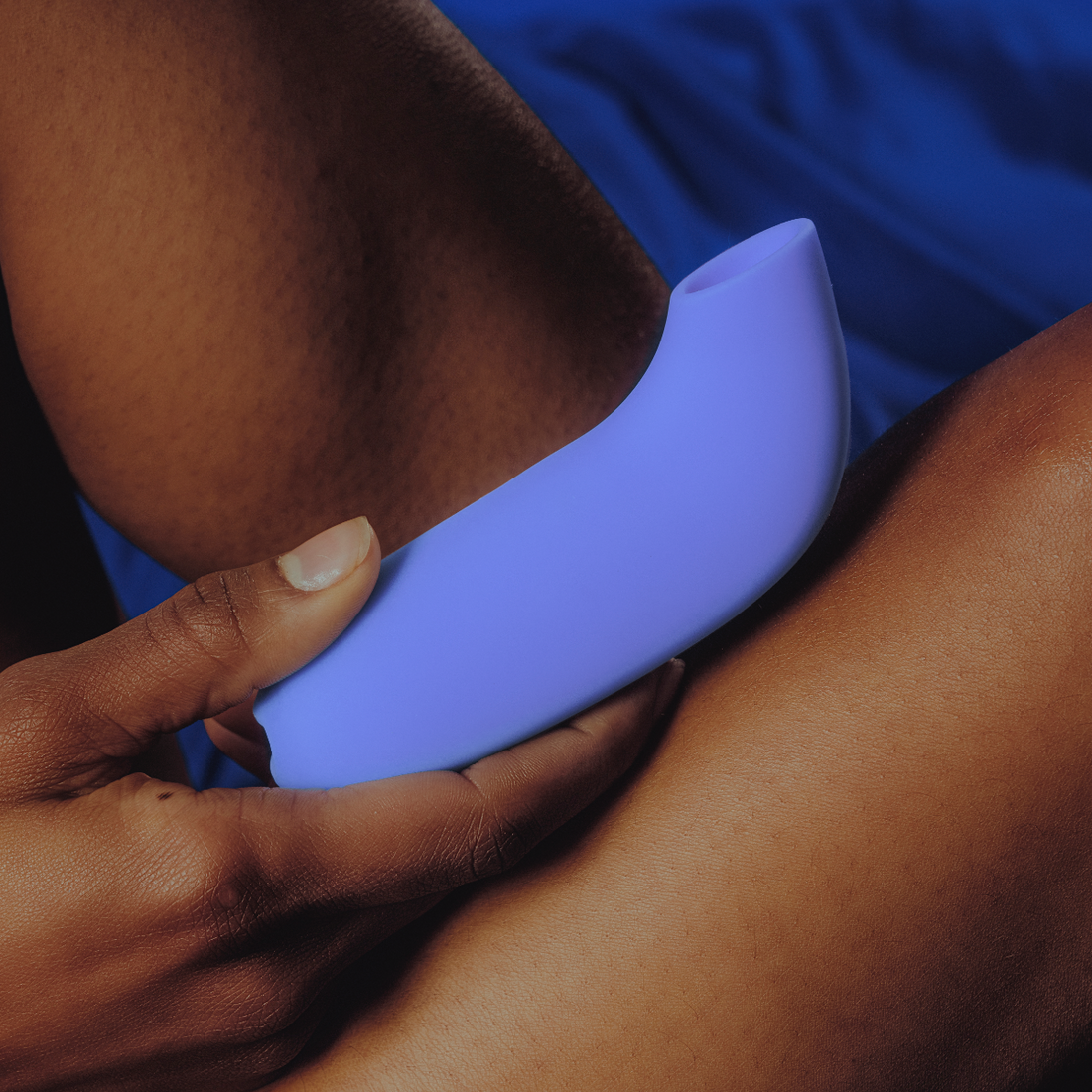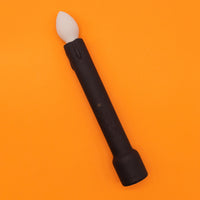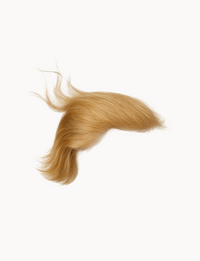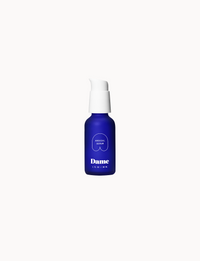Alexandra Fine, Credentialed Sexologist, M. Psych | Written by Dame
“Wow, that one felt different!”
Those who are still in the early stages of sexual exploration – or those who have decided to expand their sexual horizons later in life – are often startled when they experience different kinds of orgasms than the one(s) they’re used to feeling.
The first time that vulva-havers have a G-spot orgasm, or that penis-havers a p-spot orgasm, can be strange, surprising and exciting. And it can pull back the curtain on an entirely new world of sexual possibilities: there is more than one way to cum!
But let’s take a step back. Are those really different types of orgasms, or simply different ways to reach the same promised land?
That’s a complicated question to answer.
Is There Really More Than One Type of Orgasm?
Almost all of us know that there’s a “difference” between clitoral orgasms and vaginal orgasms.
And some of us know (from personal experience, that is) that there’s a “difference” between genital orgasms and anal orgasms.
And if you were to watch a penis-haver and a vulva-haver climax side-by-side, you’d certainly notice one very obvious, white, sticky “difference” between their orgasms.
But are those really different types of orgasms?
Let’s quickly check the Oxford English Dictionary definition for orgasm:
A climax of sexual excitement, characterized by feelings of pleasure centered in the genitals and (in men) experienced as an accompaniment to ejaculation.
Hmmm. There’s nothing there about different types of orgasms, other than a mention of the tangible evidence produced by those with penises. (No, “female ejaculation” is not exactly the same thing.)
Let’s try something else. What does science say about the question?
The prevailing view has long been based on sexologists Masters and Johnson’s theory of the human sexual response cycle. Sex experts have largely viewed orgasm as a single series of physiological sexual responses, like increased blood flow and a build-up of sexual tension, which result from sexual arousal and stimulation. Climax can be induced in different ways and it manifests in different ways, depending on the orgasm-haver’s anatomy.
But in simple terms, an orgasm is an orgasm.
Climaxes might feel different, of course, because of psychological and health-and-wellness factors like level of arousal, stress, medical conditions that stress the body, or substance abuse. According to Masters and Johnson the physiological process of orgasm, however, remains the same.
Critics of the Masters and Johnson model have focused primarily on its structure. For example, Rosemary Basson and others believe that sexual response isn’t linear, but circular. For example, she says that arousal doesn’t always precede desire. In some people, it can work the other way around, or the two can happen simultaneously.
But most of those critics don’t argue with the view that orgasms are physiologically the same. And a comprehensive review of the literature concluded that, for all sex and genders identities:
“Stimulation of…triggering zones are integrated into a ‘whole’ set of sensory inputs…that reliably induces pleasure and orgasm during masturbation and copulation.”
In simple terms, an orgasm is an orgasm.
Unless you ask French gynecologist Odile Buisson, who led an innovative pilot study of vulva-havers’ orgasms. She used ultrasounds to view what happened in participants’ bodies while they climaxed during masturbation or penetrative sex. And she discovered that the root of the internal clitoris was only involved in orgasms resulting from vaginal stimulation. During clitoral stimulation, only some of the genital structure responded.
Her conclusion: “Despite a common assumption that there is only one type of female orgasm…the different reported perceptions from these two types of stimulation can be explained by the different part of the clitoris and [clitorourethrovaginal] complex that are involved.”
In simple terms, there are different types of orgasms – at least in vulva-havers.
Does that mean that further research will show that penile orgasms and prostate orgasms are really “different type” of orgasms, or that “female and male” orgasms are completely different physiological events? Or is there really just one type of orgasm, which can be stimulated and felt in many different ways?
We’d need a time machine, or a huge staff of Ph.D.s specializing in sex research, to answer that. Instead, we’ll take a leap of faith, and conclude that there really are many different types of orgasms.
Let’s see just how many we can identify.
Types of Orgasms
Some of these orgasms are most definitely anatomically-specific. For example, only those with vaginas can have vaginal orgasms, and only those with prostates can have prostate orgasms. We’ve put those climaxes into their own category.
Others, like nipple orgasms, are anecdotally more common among vulva-havers than penis-havers – but not necessary dependent on biological sex. We’ve put those into their own category, which we’ve decided to label “orgasms for all.” Come to think of it, that’s not a bad mission statement, either.
Orgasms for Vulva-Havers
Clitoral Orgasm
You might have noticed a mention of the “internal clitoris” in our earlier discussion, and you might have been confused.
Isn’t the clitoris the “pleasure button” located at the top of the vulva where the labia (pussy lips) meet, just below the clitoral hood? Not exactly.
The clitoris is actually a very large sexual organ, most of it located inside the body. (That explains the reference to an “internal clitoris.”) The clit, as most people consider call it, is simply the external portion of the organ properly known as the “glans clitoris.” We’re intimately familiar with the glans clitoris because it’s the only part of the clitoris that’s accessible – and because of the fabulous orgasms that stimulating it can produce.
The glans clitoris is packed with nerve endings, which is why it’s so sensitive. So sensitive, in fact, that many people reach clitoral orgasm by stimulating the labia or the clitoral hood instead. Whether the stimulation comes from fingers, oral sex or vibrators, the majority of vulva owners find that a clitoral orgasm is the easiest way to have “the big O.”
It goes even further than that. One of the largest surveys on sexual pleasure ever conducted, published in the Journal of Sex and Marital Therapy, found that more than a third of respondents with vulvas required stimulation of the clitoris in order to experience orgasm. Another third or so said that they didn’t need clitoral stimulation to climax, but their orgasms during vaginal penetration were more enjoyable if both erogenous zones were stimulated at the same time.
Why do clitoral orgasms come on so fast for many people? We’ve already mentioned the reason: nerve endings. It’s estimated that there are more than 8,000 nerve endings in the clitoris, thousands more than there are in the vaginal walls – and by the way, twice the number of nerve endings in the penis.
Vaginal Orgasm
Many sex educators simply refer to vaginal orgasms as G-spot orgasms, and we’ve just touched on the reason for that. The vaginal canal contains very few nerve endings, so it’s extremely difficult to produce the stimulation needed for orgasm by penetration with a hand, sex toy or penis.
That is, of course, unless said hand, sex toy or penis contacts the G-spot.
Once the stuff of legend, most researchers and sex therapists now believe that the G-spot really does exist. (A few vocal naysayers continue to dispute its existence, but they’ve largely been drowned out at this point.)
The Gräfenberg spot is located halfway between the pubic bone and cervix on the anterior vaginal wall. In more user-friendly terms, it’s a couple of inches inside the vagina, on the side closest to the belly button. If you’re looking for it, the G-spot swells during sexual arousal and feels like a small bump. The best way to contact and stimulate it is by using a “come here” motion with the index finger, or an angled vibrator or dildo specifically designed for G-spot penetration.
The G-spot is extremely sensitive – and most experts believe that’s because it’s part of the clitoral network. Others think it’s because the G-spot is near the urethra, and G-spot stimulation makes contact with the urethral sponge (which expands during arousal). Whatever the reason, “hitting the G-spot” is usually the most reliable way to achieve orgasm through penetration, and some authorities claim that as many as 10% of vulva-havers ejaculate (often referred to as “squirting”) when they climax this way.
Is it worth the effort needed to find and stimulate the G-spot? Well, some people say the activity simply makes them want to pee. Many others, however, say these types of vaginal orgasms are more intense and “full body” experiences than clitoral orgasms.
If you’ve successfully climaxed via the G-spot, here’s something else you can try.
A-Spot Orgasm
A couple of inches deeper inside the vagina, along the same vaginal wall as the G-spot, you may be able to find your A-spot. There’s still much debate in the sex research community over the existence of the A-spot, but a noteworthy study done about 25 years ago seemed to confirm anecdotal reports.
A sex educator/doctor stimulated the area she believed to be the A-spot, on a group of vulva-having patients complaining of vaginal dryness. After ten minutes or fifteen minutes, about two-thirds of them produced more lubrication – and around 15 percent reached orgasm.
Will you be able to have an A-spot orgasm? Quite possibly not. But it could be fun to try.
Blended Orgasm
We’ve already alluded to this type of satisfying orgasm; it’s when two types of climaxes, usually a clitoral orgasm and a vaginal orgasm, occur simultaneously. As you would probably expect, being able to experience both climaxes at the same time often produces the mind-blowing orgasms of many people’s dreams.
It’s certainly possible for blended orgasms to involve other erogenous zones like the nipples or the anus, but clitoral/vaginal orgasms are the most common combination. Some experts say that combo is particularly satisfying because it involves stimulating two different parts of the clitoris, one external and one internal.
Perhaps the easiest way to manage this on your own is with a rabbit vibrator. The bunny ears stimulate the clitoris, while the shaft does the vaginal work. Of course, there are many more possibilities when you’re playing with a partner.
Can blended orgasms change your life? Charlotte on Sex and the City certainly found that it changed hers.
Cervical Orgasm
This one isn’t easy for most people. The cervix is the ring of tissue between the vagina and the uterus, at the very far end of the vaginal canal. There are lots of nerve endings in the cervix, but it usually can only be reached with a long, curved sex toy. Even very long penises (and doggy-style penetration) may not contact the cervix. And going that deep can be painful unless arousal levels are already very high – and lots of lubrication is flowing.
If you do manage to find the cervix with your hand, firm and gentle pressure is the best way to stimulate it. Poking it will hurt, and teasing it won’t get you anywhere.
Those who’ve managed to have a C-spot orgasm say it seems to originate around the belly button and spread pleasure throughout the body. More vulva-owners say, though, that they’ve never managed to hit the spot.
If you’re going to try it, it’s best to go exploring a few days before your period starts. That’s when the cervix reaches its lowest point in the vagina and it’s easiest to contact.
O-Spot Orgasm
Even fewer experts believe in the possibility of existence of O-spot orgasms than A-spot orgasms. The estimated 8% of vulva-havers who’ve experienced them, though, would beg to disagree.
The O-spot is a spongy patch on the vagina’s back wall, about as deep as the A-spot. It’s sensitive on some people, but not others. However, those who respond to stimulation don’t initially feel anything in their clitoral network; the back wall of the vagina actually contacts the anal wall, which is rich in nerve endings. Many say the sensation is somewhat similar to that of anal sex.
One of the best ways to shoot for an O-spot orgasm is to (hold onto your hats) insert two hands with the palms facing out. Then you can use the two index fingers to stimulate the opposite walls of the vagina, one hitting the G-spot and the other hitting the O-spot. Will it work? We only know about this technique from anecdotal reports, but be sure to let us know what happens!
U-Spot Orgasm
No, we’re not making these up just so we can use every letter of the alphabet. Everyone has a urethra, but for the most part, it’s only some vulva owners who can climax by stimulating the sensitive tissue located around and above the urethral opening (where the pee comes out). What makes it potentially orgasmic? That tissue is attached to the skin that covers the clitoral hood.
The U-spot is only sensitive enough to actually produce an orgasm for some of those who try it. Others may find that it just heightens their arousal, and many will discover that it isn’t fertile ground for them to explore. If you’re going to try it, be extremely gentle. Light teasing with a finger or tongue works best; vibrators are usually too powerful to use without overwhelming the nerves in the area.
Orgasms Also Mentioned
Some sexologists list these as “types” of orgasms that vulva-havers can experience. We think of them more as “extra added bonuses.”
- Squirting Orgasms: Believe it or not, there are studies claiming that more than two-thirds of all vulva owners have ejaculated during an orgasm. More believable reports are still quite vague, saying that anywhere between 10-50% have squirted at least once.
Some people find squirting arousing or sexy. Others most certainly don’t, even though the ejaculate isn’t really urine, as they might believe. It contains mostly PSA fluid (an enzyme from the Skene’s gland) and fructose, with traces of urine sometimes present. Science doesn’t really understand what causes squirting, so there’s no surefire way to make it happen; the best chance of it occurring is during a G-spot orgasm.
- Multiple Orgasms: Some of those with vulvas are able to climax more than once in a session, but as with squirting orgasms, there’s no guaranteed way to get there. Advice on achieving multiple orgasms is all over the map; some experts say it’s easier with a partner who can keep the stimulation going after the first climax, others say it’s easier solo because that eliminates distractions. And many who are capable of multiple climaxes discover it by accident. Since everyone’s different, trial-and-error is often the best approach.
It is true that most penis-havers are unable to cum multiple times, because they normally need a “refractory period” to cool off before they can go again. A few fortunate ones, though, have an extremely short refractory period and can climax several times in a session.
Orgasms for Penis-Havers
There will be many fewer entries in this category. Don’t blame us – we’re only the messenger.
Standard Orgasm
You can also call it a penile orgasm or an ejaculatory orgasm. Most penis-havers simply think of it as “orgasm,” and it’s what everyone thinks of whenever a “male orgasm” is mentioned. There’s not much else to say, really. The nerve endings in the penis (and perhaps its next-door neighbors like the testes) are stimulated, orgasm results and ejaculate is expelled.
Or – maybe there is a little more to discuss. Orgasm and ejaculation are actually two different physiological events which occur in different body parts at virtually the same time. The brain has the final say on orgasm, while ejaculation happens in the urethra and prostate. In fact, climaxing without ejaculation is a tantric skill practiced fairly often in some Eastern cultures. So that gives us two types of standard orgasms, orgasm with or without ejaculation; the latter is called a dry orgasm. Want an example that’s more relatable? Think wet dreams.
Of course, there’s also possibility of multiple orgasms, but as we’ve already mentioned, that’s an extremely rare “ability” among those with penises.
Prostate Orgasm
Yep, it’s almost time to talk anal sex.
Why “almost?” Because penis-havers may also be able to climax when their prostate is stimulated from the outside, too. It’s done by pressing the right spot on the perineum (the skin between the scrotum and the anus, colloquially known as the taint). It doesn’t work for everyone and it’s an acquired skill, but an external prostate orgasm is possible for some.
The more conventional approach, of course, is through the anus. The prostate is accessible from behind by contact with the “P-spot,” about 1-2 inches up the front anal wall (the belly button side). Unlike the G-spot, the P-spot is fairly easy to find because when its owner is aroused, it’s about the size of a walnut and feels hard to the touch.
Pressure or massage will produce the feeling of needing to urinate – that’s the sign that you’re doing it right and getting close. A prostate massager (a more polite term for vibrator) may speed the process.
And here’s more good news: once you’ve mastered the prostate massage (sometimes called prostate milking), you’re set up for the same type of blended orgasm that vulva-havers can enjoy.
Orgasms for All
As we explained at the start, these are climaxes that anyone can experience, even though many of them are more common for vulva owners than they are for penis owners. Get ready; a few may blow your mind or add a new dimension to your sex life.
- Anal Orgasm: We’ve already discussed the prostate orgasm, but this is an equal-opportunity climax. The anus and rectum are very close to the internal clitoris and nerve-rich pelvic floor, as well as the “alphabet spots” in the vagina, so anal stimulation can definitely send vulva-havers over the edge. Just don’t forget to use plenty of lube – the back entry doesn’t self-lubricate.
- Nipple Orgasm: Some people’s non-genital erogenous zones are extremely sensitive. So sensitive, in fact, that playing with them can actually produce an orgasm. The nipples (and even the areolas) are the most productive targets, because nipple stimulation sends signals to the brain through the same nerves used to convey messages from the genitals. The neck and belly are also fruitful areas to explore, and some vulva-havers have even been known to experience “kissing orgasms.”
- Coregasm: These exercised-induced orgasms aren’t deliberate; they “just happen” for some people while they’re doing core workouts. Weight-lifting, climbing and ab crunches are most likely to bring on a coregasm, and these orgasms are more common among those with vulvas. Want to encourage one of these bizarre climaxes? It might help to add exercises that benefit your pelvic floor muscles, like Kegels, to your ab workout.




















































